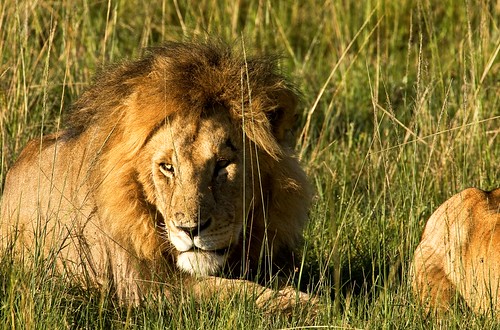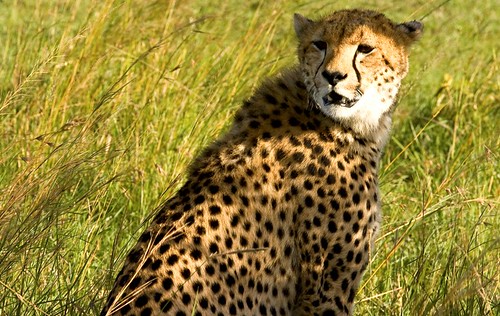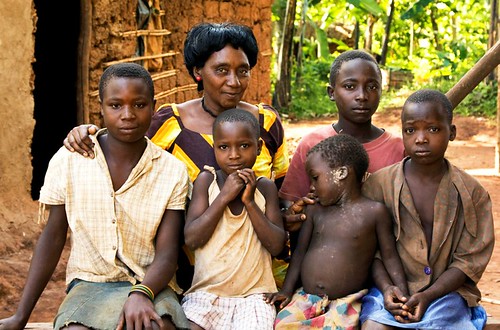Africans live in one of three places: a village, town or city. It’s important to understand these rural, semi-urban (rather, semi-rural), and urban areas to appreciate life in Africa.
The Village
Villages are basically an area encompassing a collection of small subsistence farms. The farmers’ self-made homes are usually mud walls and thatch roofs, or if wealthier, concrete walls and tin roofs. The indoors are used for sleeping and sitting; the outside for cooking, laundering and often eating. Next to their dwellings are the plots of land where they grow their food. Their days are spent just trying to meet basic needs: they wake up early and if lucky, make and eat breakfast; they then tend to their fields and if blessed, they take lunch; they tend to their fields some more or perform household tasks, and then back to make supper. If their children are fortunate, their caretakers will have both the money and desire to send them to a local school. Otherwise, the older children help in the fields and with chores, and the young ones run around unattended.
The vast majority of Uganda is extremely fertile and does not suffer from drought and its people from starvation like many other African nations; nonetheless, many villagers struggle to feed their whole families. If they can overcome hunger, there is still malnutrition to face as many only eat the staples their land gives forth, and often go without much needed protein, making the children listless at school and the entire clan more prone to illness.
The first three things I noticed traveling through the villages were: one, all of the land has been developed; it seems all of Africa, except for the few conservation areas have been deforested; two, there are so many children, running about very dirty, wearing tattered clothes falling off their bodies, usually snot-nosed and sick; three, there is almost nobody between the ages of 20 and 40; most have died from AIDS or have fled to the cities and towns.
The AIDS epidemic is most visible in the villages where the middle-aged are almost nonexistent. Truly, you see almost exclusively countless children playing with each other and whatever trash they can turn into a ball or game, and their elder caretakers slowly making their way around with great dignity and a degree of resignation and pain. There is not much joy in the older peoples’ lives; having lost many of their children to the virus and urban lure, and watching after their innumerable orphaned grandchildren. The government claims that it has reduced the virus rate from around 24% a decade ago to about 6%, but Ugandans on the street acknowledge that can’t be so. Two friends of mine are physicians, AIDS specialists in Kampala. They put the infection rate at around 15 to 20%.
The villagers need so many basics to improve their standard of living: latrines for improved sanitation (just dug pits, not real toilets, mind you), seedlings for food security, wells for safe water, vocational training for income generation, clothes for half naked children, bed nets for malaria protection, a few dollars for school fees, a few dollars for live-saving medicine, accommodations for homeless teachers, accommodations for homeless orphans, community centers for educational courses, educational courses for just about everything: family planning, health intervention (malaria, HIV, etc.), nutrition and sanitation, agricultural practices, adult literacy, vocational skills, elderly care, orphan care, etc.
It is hard to describe this level of chronic poverty. I recently had a very kind friend inquire about fundraising for the projects I am coordinating. She asked if maybe we could raise money to give the village children backpacks stuffed with school supplies and vitamins. I use her thoughtful brainstorm as an example because it helps to put the need here into perspective. The village children don’t have or even need backpacks; many can’t afford the very meager school fees, and if they could, the schools don’t have books anyway. The children first need a secure food and water supply, mosquito nets, medicine, clothes and basic school costs paid before luxuries like shoes, books, vitamins, balls and bags.
Another way to conceptualize the poverty here is to understand the distinction and definition of the different types of poverty around the globe. International development economist icon Jeffery Sachs categorizes poverty into three groups. Poverty in wealthy countries is defined by those whose basic needs are met, such as food, water, shelter, schooling, but who are exempt from many goods and services the society has to offer. Poverty in emerging economies, or middle income countries such as China, Brazil, India and Mexico, includes those whose basic needs are slowly being met and who are on the verge of greater wealth and prosperity. And finally there is the poverty found in the poorest countries on earth, the bottom billion as they are called for the number of unfortunate souls in this group. These people’s lives are characterized by persistent, endemic poverty that proves almost impossible to escape both at a personal and societal level; a poverty trap. They wake up every morning spending the day just trying to survive.
The Town
Town is an area with many local shops, maybe a couple of small clinics or hospitals, and a few schools. There are usually a scattering of nicer homes near town, owned by the wealthier business people, and then the land gives way to the outlying poorer villages. People from the U.S. would probably call an African town a village, and villages would maybe be called farms.
The towns have more wealth than the villages. You won’t see the same widespread poverty. And the towns also have better infrastructure: maybe some street lights, a well or tank, public toilets. There are, of course, many destitute townspeople and an uncountable simply idle. As I mentioned in a previous blog, many Africans move to towns and cities looking for work that doesn’t exist. The town I live in, Lugazi, does not suffer from unoccupied people to the same degree as other African towns, but they are there nonetheless; lying in the grass, sitting on a stoop, lounging next to a shop, standing next to the road.
Most of the out of work and menial laborers, such as the sugar field workers and boda boda drivers, are uneducated. They comprise the very large constituency that voted for the town’s new mayor, Obama, to the dismay of the educated business owners. Certainly, classes exist in towns and even more so in cities. In the village, however, wealth distinction is almost unperceivable; everyone seems destitute.
Uganda is landlocked. This is a serious obstacle to its development. It also has no significant natural resources; another major development hindrance. It has a poorly educated public. Yes, yet an additional factor inhibiting growth. There are many barriers that we’ll explore later, but the point is that Uganda does not have the factors necessary for substantial business investment or the export of domestic products. This means that Ugandan businesses are usually small and serve the people in the immediate area. As such, towns and their shops pretty much all look the same. The shops are usually not more than maybe a dozen square feet, open air and unsophisticated: a small hair salon, a pharmacy selling a handful of medicines, a snack and soda stand, a music shop filled with African tapes. The shop owners usually sit outside all day exchanging gossip, their small children running around, doing little business.
The town schools are better than the villages’; the public schools are superior and there are more private schools, which offer the best education by far. Still, many town youth do not attend due to school fees. I watch them from my balcony running around when the others are in school. They are usually, as Ugandans say, rougher than their educated counterparts. Many also engage in small time crime: pick pocketing, stealing scrap metal from community property or the façade of personal residences, occasionally breaking into people’s homes. The limited opportunities that exist in this society for acquiring wealth are staggeringly small, effectively absent, for the uneducated; even house girls usually need to know English, which is only taught in school as many speak tribal languages in the home. These rough children in town, without an education and without land to farm have dismal futures.
The City
There are real African cities: Nairobi, Johannesburg, Cape Town. Kampala is not one of them. Kampala basically looks like a really big town with some tall buildings, lots and lots of traffic, and terrible, horrible, Sweet Jesus!, horrendous roads. The pot-holes are too numerous and too large for any small car to navigate. SUVs and trucks are a necessity; otherwise vehicles spend most of the time in the repair shops, which are usually run by untrained mechanics who oftentimes make the cars worse off.
There is still greater wealth and infrastructure to be seen in the city, compared to the towns. Some live in comfortable homes or apartments, own private vehicles, maybe even reside in mansions on the surrounding hillsides; affluence built legitimately and not, but always hustled. Even Ugandans with university educations, professional degrees and good jobs usually need to have a few sources of income to have a decent standard of living. For example, most physicians here are paid about $300 per month. This is about 300 times more than the sugar cane workers, and even more than the villagers, but it is still not enough to live very comfortably on. Many of my educated Ugandan friends have a full time job, or two part-time jobs and a series of things they are doing on the side: running internet cafes, owning sausage stands, performing outside consulting. The virtuous have to be shrewd and juggle to make ends meet. The dishonest will simply steal public or private funds when the opportunity arises; a depressing situation that occurs constantly in a country that is reliably in the bottom group on corruption indices.
For those that don’t have full time employment in the city with a reputable public or private enterprise, there are the opportunities also found in towns: shop keeping, boda boda or taxi driving, being a house girl. And there is begging. There are a number of beggars in the Kampala streets, although not as many compared to cities in other developing nations. Most beggars in Kampala are from the northeastern tribe Karamojo. They usually send their children out alone to beg, making it appear they are orphaned or abandoned to garner more sympathy, and therefore, more cash. The government is trying to intervene and mobilize these people to go back to their land up north. There are, however, a number of street children who are truly homeless, dumped in the city by overwhelmed or careless family members, or orphaned from war, AIDS or other symptoms of poverty.
To understand the lifestyle and business environment here in Uganda better, it is crucial to cite a recent government statistic that reported the national employment rate at 5%. You did not read that incorrectly. It is the employment rate, not the unemployment rate. Their employment rate is about what the U.S. unemployment rate is outside of recessions and depressions. The majority of Ugandans are subsistence farms, and the rest are partially or self-employed: selling mangos at the roadside, styling hair in a salon, driving a taxi between towns; living just on the edge of the next catastrophe that could send them deeper into poverty.
For the wealthy, life isn’t as precarious and offers some of the same luxuries found in the West, although of poorer quality. I’ve seen local fashion shows on TV of very low production value, both the program and the clothes. There are restaurants and hotels, but even the nicest ones would only be considered luxurious by African standards. Homes may have electronics and personal computers, but they are almost all Asian knock-offs; the low wage markets here can’t afford the high cost of the real deals. There are DVDs, but again, all seem to violate international copyrights. And when you check them out at the store, they come in covers that usually look legit, although slightly different than in the West (for example, all of the 24 series has Bower’s very beautiful white daughter on the cover despite her not being a main character), but the disc itself is plain with the sloppily written title in felt tip pen: 24 Season 1, Part I.

























